The television fights back: Sky Live brings a new level of interaction to the medium
Sky Live pairs with Sky Glass to create a domestic entertainment hub unlike any other. Can it help divert our tired eyes from away from our smartphones?
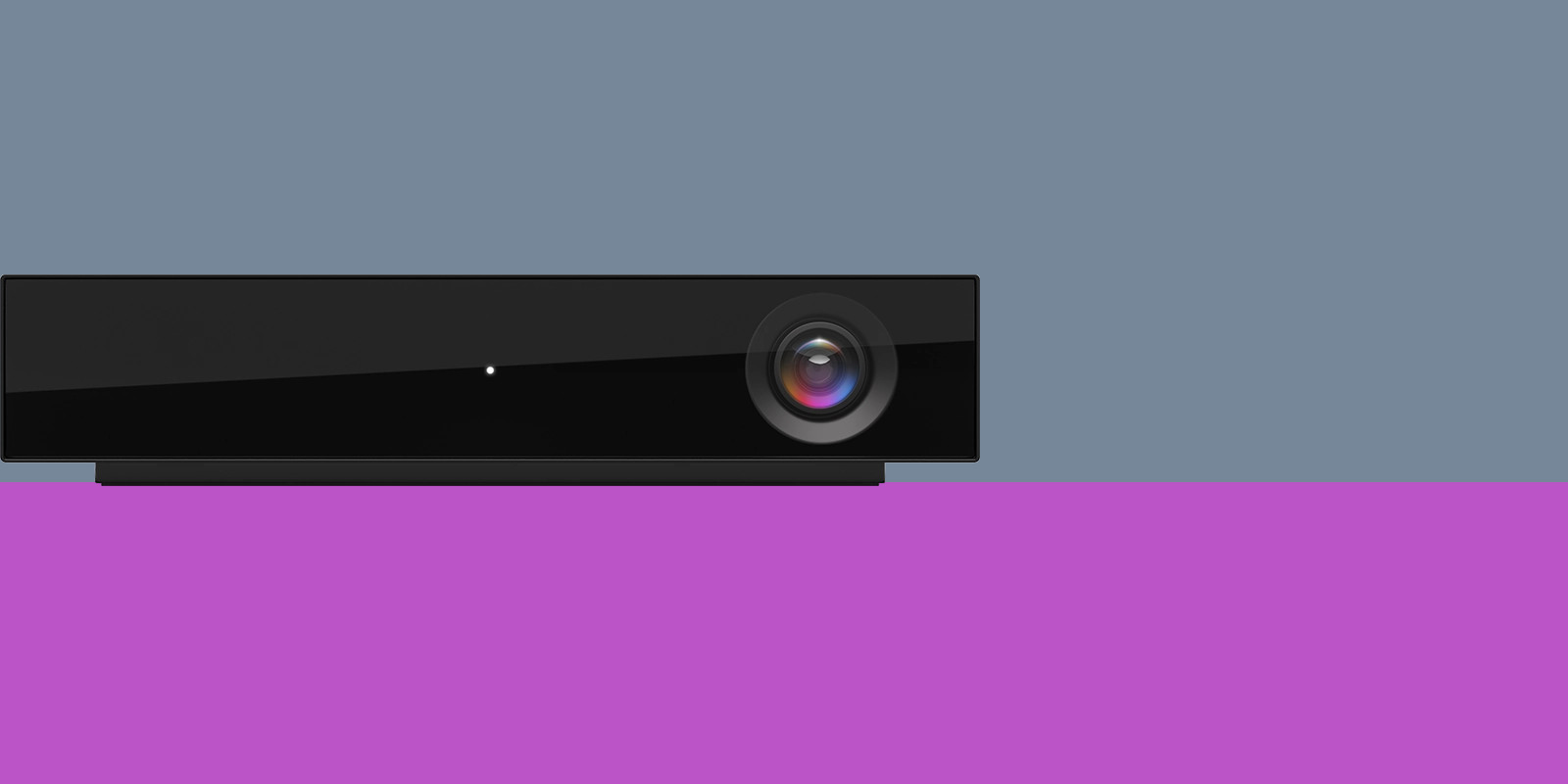
There's an oft cited myth that humans only use a small fraction of their brain capacity. What is not in doubt, however, is that we only use a small fraction of our devices’ capabilities. Television is no different. For a good proportion of the twentieth century, TV featured prominently in future domestic concepts, an information and communications screen that sat in the heart of the home. Home computers and smartphones swiftly scuppered that vision, and TV’s potential waned.
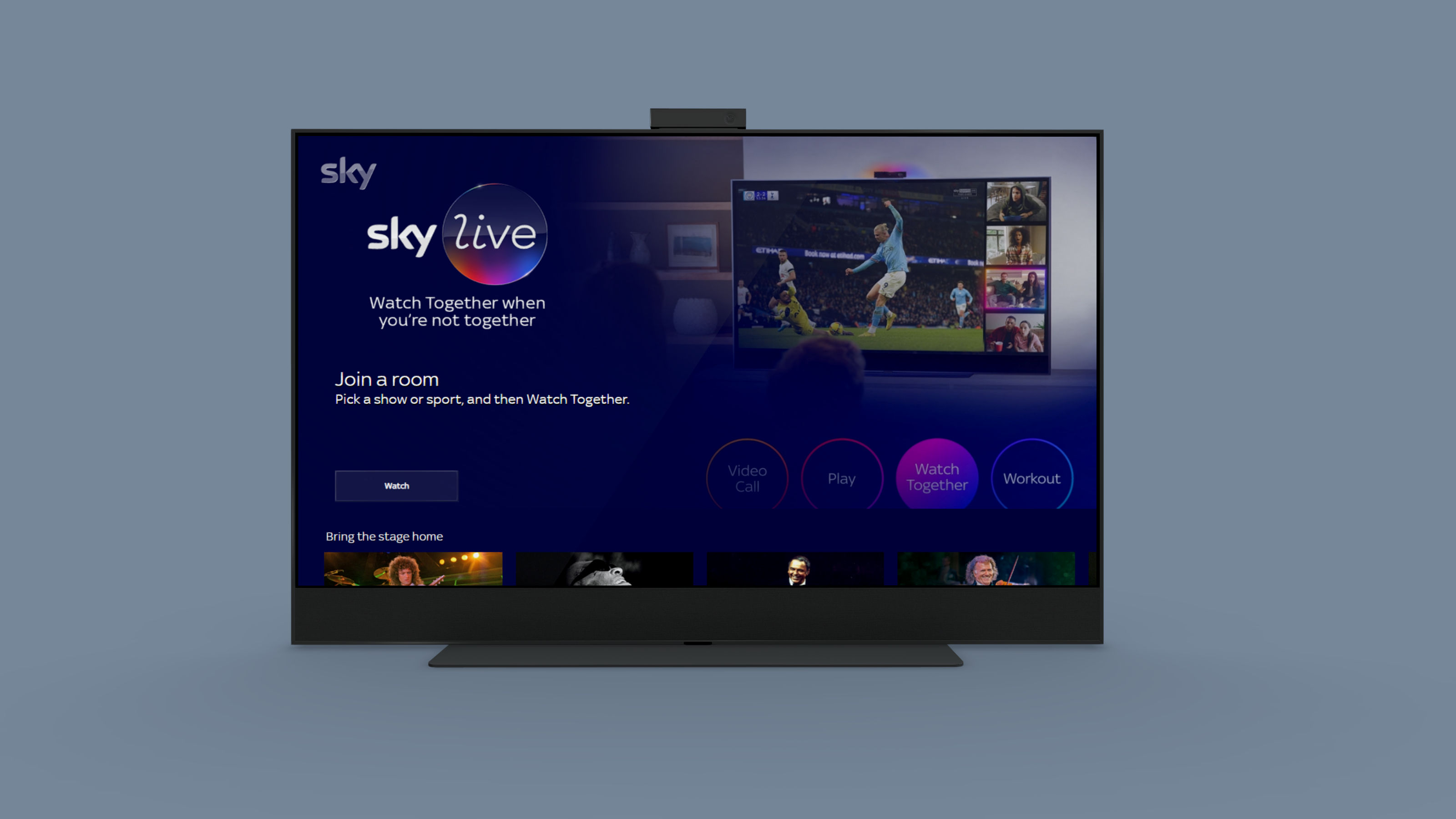
Sky Glass and Sky Live
As a result, it seemed the writing was on the wall for the traditional television. Viewers were departing in droves for the convenience of portable devices and laptops, and the old model of scheduled broadcasting and accompanying advertising was being hollowed out by the vagaries and whims of the streaming audience.
There were many attempts to seamlessly blend the information age with the television, from WebTV in the mid-90s through to AOL TV and then the emergence of ‘Smart TVs’ at the turn of the century. The latter is now the de facto industry standard, despite consisting of a huge number of different platforms and services, many of which are messily combined in a complex interface.
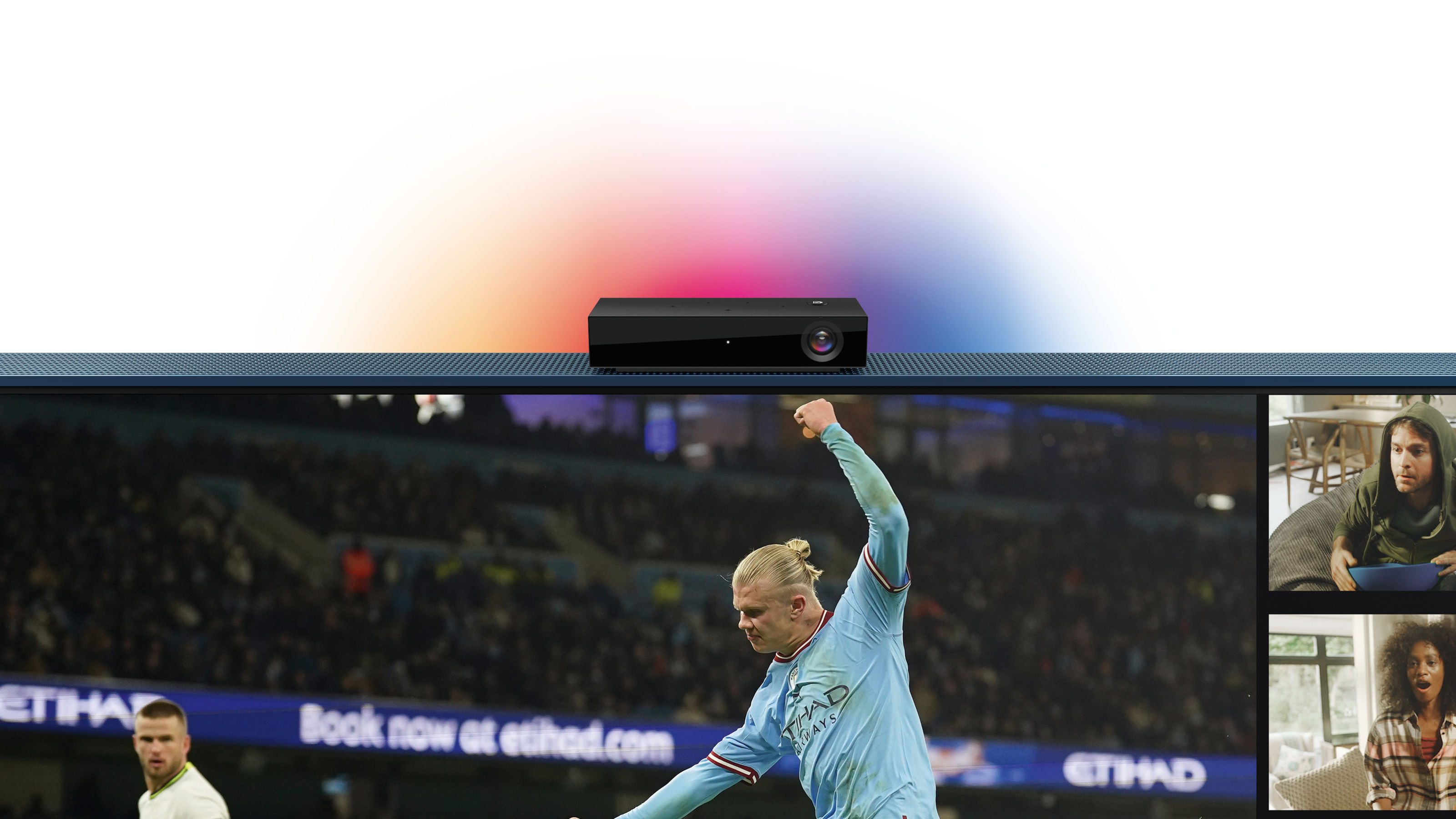
Sky Glass and Sky Live
Yet regardless of the sophistication of a modern televisions, it’s still seen as a second-class technology, passive rather than active. In 2021, Sky launched its own television set, Sky Glass, staking a new claim in this crowded hardware sector. Sky is the largest media company in Europe, reliant on set top boxes and satellite dishes, producing and broadcasting content around the world. Sky Glass was a bold move. The idea for a Sky-branded TV came after several years of discussions and design briefs developed by Door, a London-based design consultancy that tasks itself with identifying new spaces for existing businesses to explore.
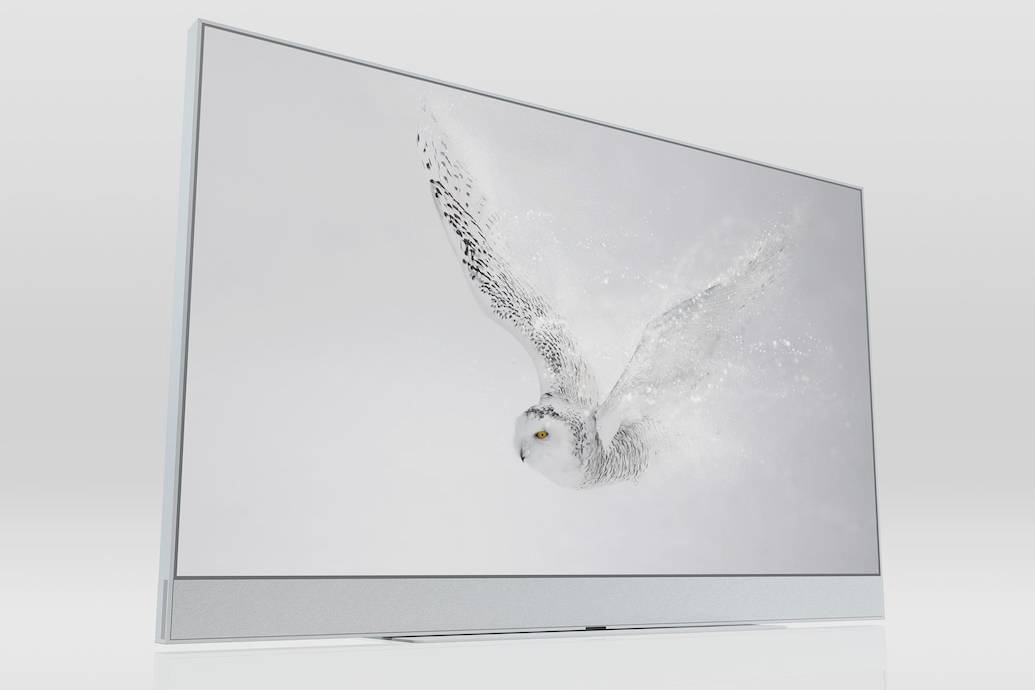
Sky Glass
Door worked with Sky’s team to reinvent the television, creating an object that wasn’t just powerful, elegant and high quality, but which also dovetailed with Sky’s existing portfolio of services and laid the foundations for more. As a package, Sky Glass appeals to the media minimalist. Relatively thick by modern TV standards, it’s available in three sizes, 43”, 55” and 65”, with an integral Dolby Atmos soundbar as well as all the receiver equipment – no additional boxes required.
Industrial design was handled by Map Project Office, with the interface and controller given equal weighting at every point of the design process. Voice search is intuitive, as is the ability to restart any programme from the beginning, regardless of the channel. It’s also the first TV set to conform to the CarbonNeutral Protocol.

Sky Live
Setting its stall out as a TV manufacturer as well as a content producer was a smart move, because it allows Sky to mastermind every last detail of the Glass experience. The final piece fell into place this summer, when Sky launched Sky Live, a 4K camera attachment for the television. After spending a few months in the company of Sky’s new Live service – in tandem with the Sky Glass television – one can start to see how TV can wheedle its way back into our hearts and minds.
Sky Live brings a number of different services to your television screen, focused on three key areas: entertainment, communication and fitness. There have been similar systems available for many years, whether as accessories for games consoles or add-ons for other Smart TVs. However, none feel as comprehensively integrated and slick as this. Sky Live, which is available on subscription or as an outright purchase, gives you access to Zoom calling and a Watch Together function (the latter only works with other Sky Live users), as well as a number of bright but simple games.
Receive our daily digest of inspiration, escapism and design stories from around the world direct to your inbox.
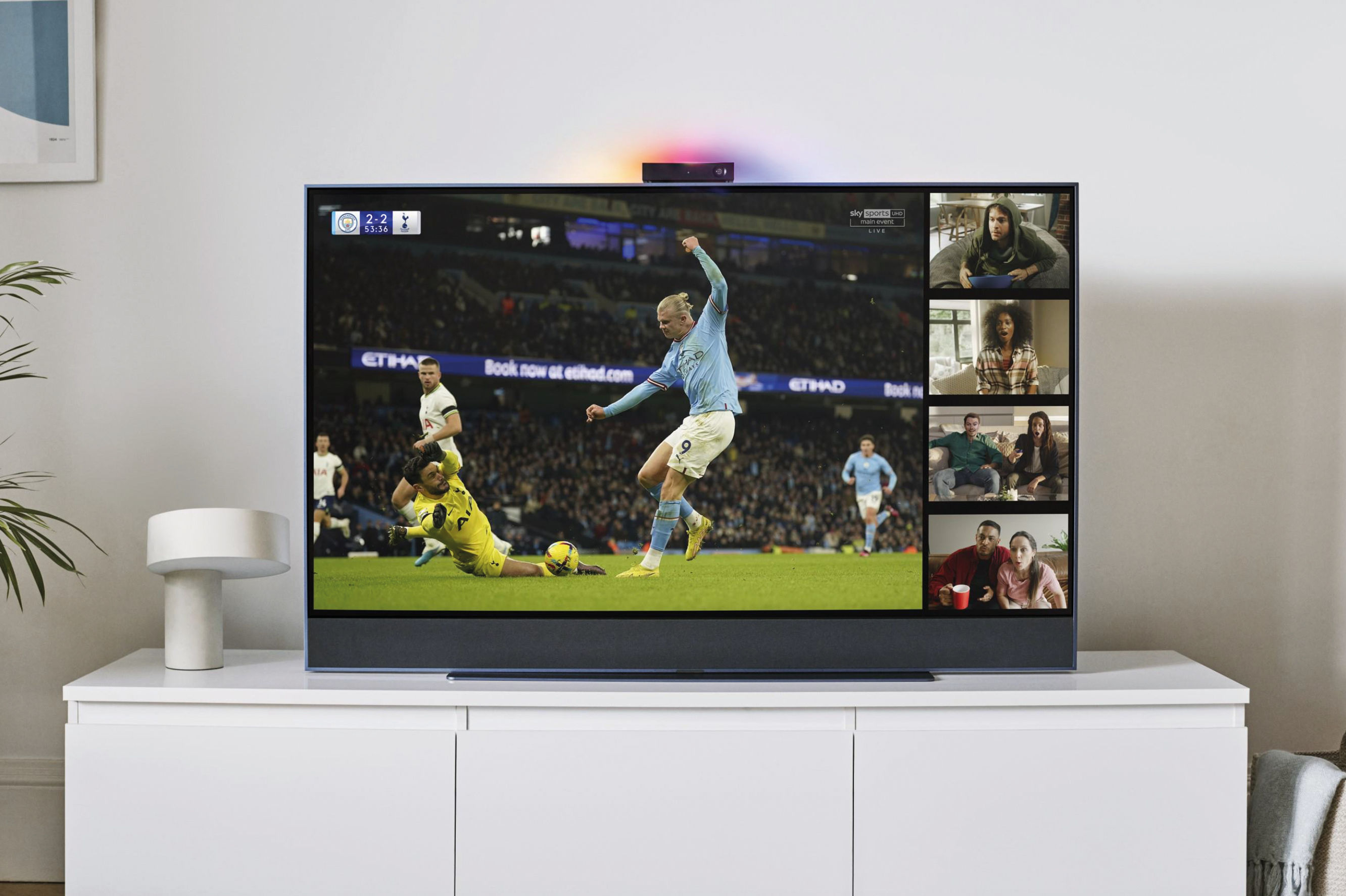
Watch Together with Sky Live
The latter uses the camera as a motion tracker, accurately mapping your body shape to translate it into onscreen movements, whether its jumping (or flailing) around to affect the action on screen or activate something a bit more cerebral. This motion tracking system is also effectively deployed in Workout mode, thanks to a new app, Mvmnt, developed in collaboration with WithU. Awarded ‘best personal trainer’ in our 2023 Smart Space Awards, the Mvmnt service is an inspiring use of tech, capable of tracking your reps, stance, and scope of movement and tailoring its response, as well as storing up details of your path to fitness via a huge number of personalised lessons.
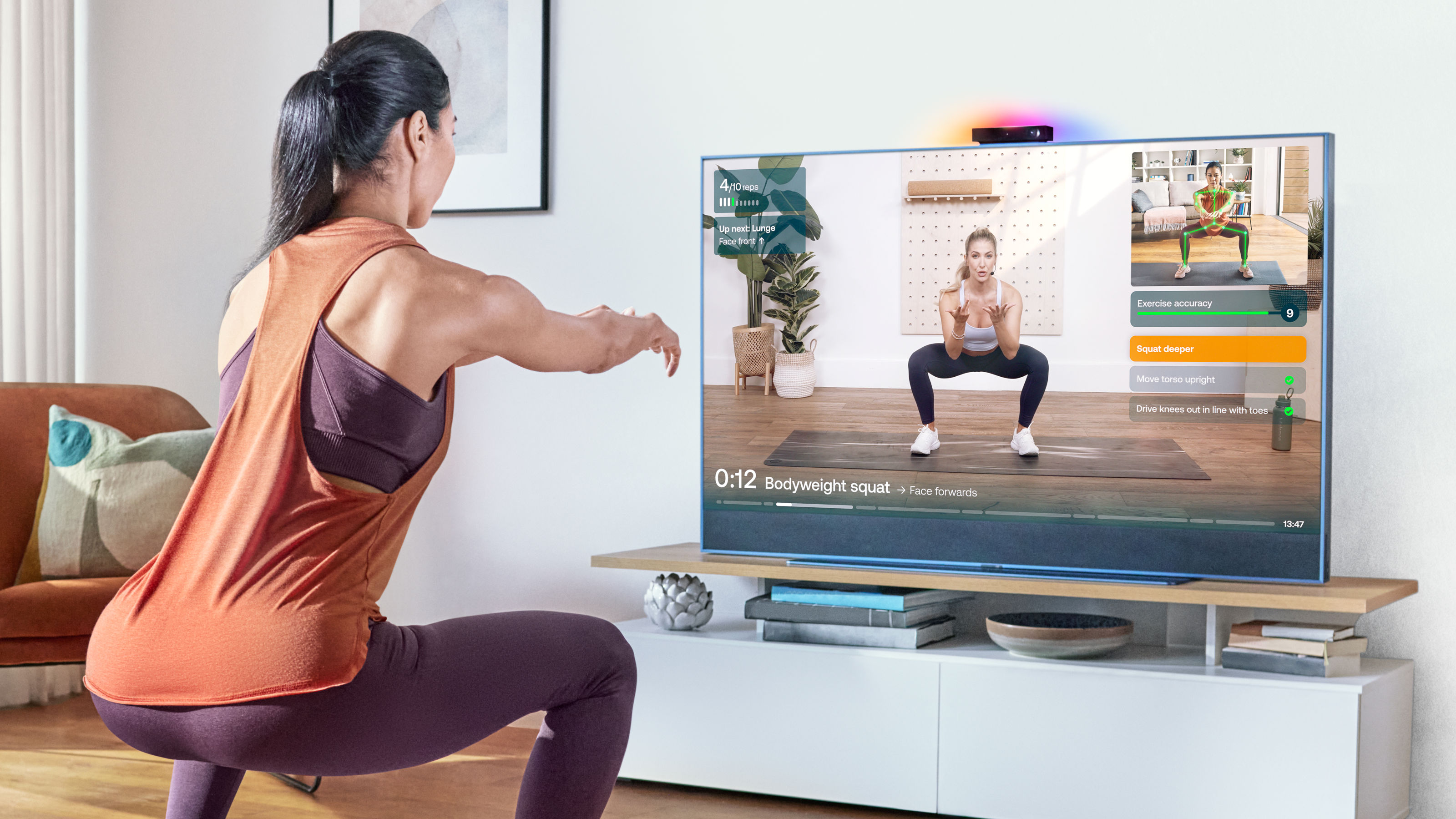
Workout with the Mvmnt app
Could that retro-future vision of the all-seeing TV-based home hub finally come true? Sky Glass and Live is perhaps as close as it has come for decades, but it faces stiff competition from the tech giants and their increasingly attentive digital assistants. For now, Sky has content creation skills to support the venture, not just through original programming, but also via its huge swathe of sports and current affairs properties.
The only other company that could pull of such a device is Amazon, but most people are already wary of the long tentacles of targeted advertising. Sky Glass and Live feel far less intrusive, elegant even. Thanks to this finely honed delivery mechanism, Sky seems to be suggesting that screen time should be more of an occasion and much less of a mindless diversion. And that’s something to celebrate.
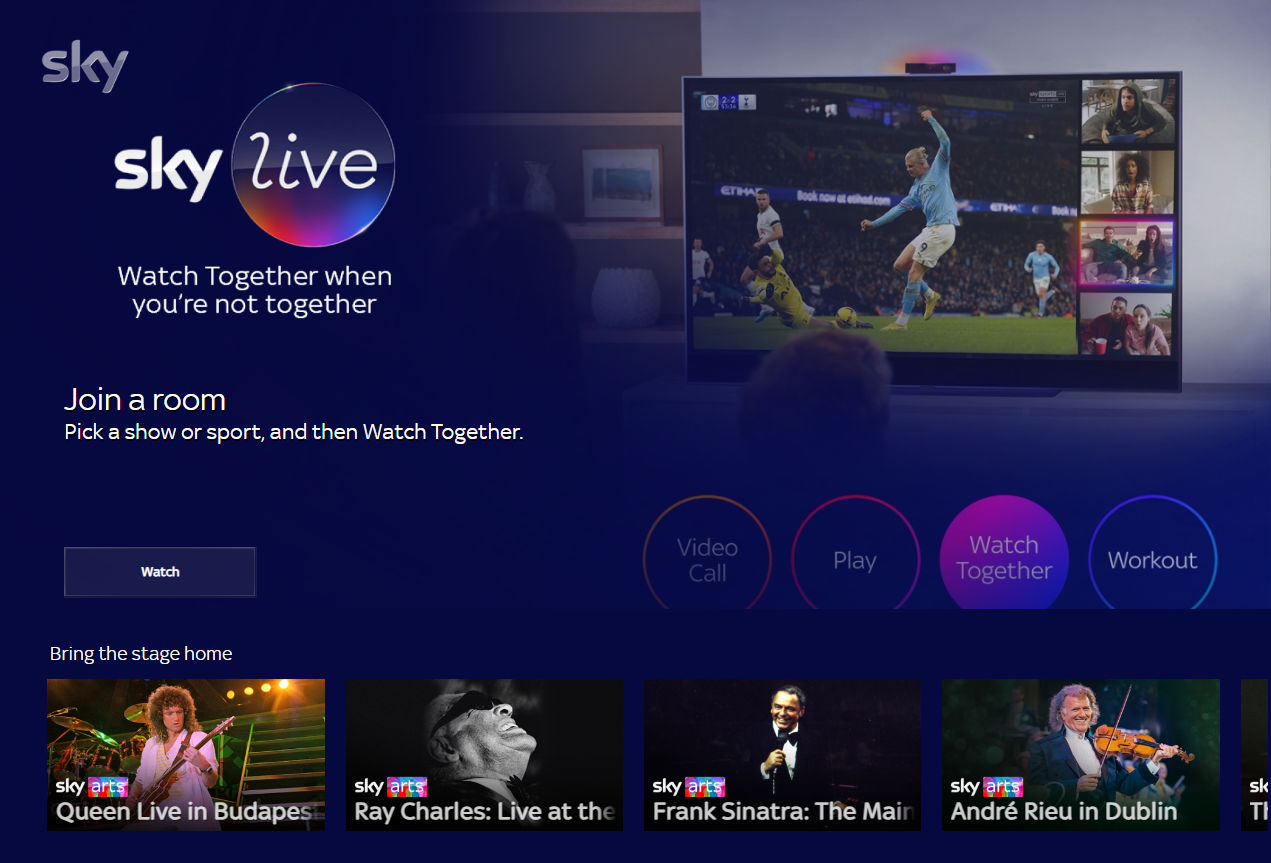
Sky Glass UI
Sky Glass and Sky Live, more information available at Sky.com
Jonathan Bell has written for Wallpaper* magazine since 1999, covering everything from architecture and transport design to books, tech and graphic design. He is now the magazine’s Transport and Technology Editor. Jonathan has written and edited 15 books, including Concept Car Design, 21st Century House, and The New Modern House. He is also the host of Wallpaper’s first podcast.
-
 The Testament of Ann Lee brings the Shaker aesthetic to the big screen
The Testament of Ann Lee brings the Shaker aesthetic to the big screenDirected by Mona Fastvold and featuring Amanda Seyfried, The Testament of Ann Lee is a visual deep dive into Shaker culture
-
 Dive into Buccellati's rich artistic heritage in Shanghai
Dive into Buccellati's rich artistic heritage in Shanghai'The Prince of Goldsmiths: Buccellati Rediscovering the Classics' exhibition takes visitors on an immersive journey through a fascinating history
-
 Love jewellery? Now you can book a holiday to source rare gemstones
Love jewellery? Now you can book a holiday to source rare gemstonesHardy & Diamond, Gemstone Journeys debuts in Sri Lanka in April 2026, granting travellers access to the island’s artisanal gemstone mines, as well as the opportunity to source their perfect stone